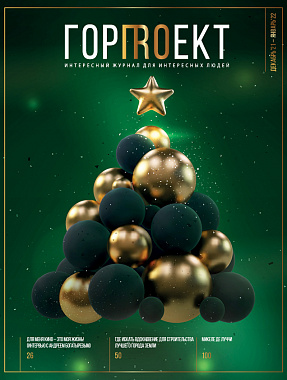“A journalist can make a revolution with one article, a politician with one law, a rock band with one song. I've spent a lifetime de-elitist design. I may not be the best designer on the planet, but at least I succeeded.”
Philippe Starck is one of the most popular and sought-after designers of our time. This man is full of life, ideas and determination to change the world for the better. Ease, fun and at the same time a deep understanding of life is seen not only in the radiant look of the artist, but in everything he does.
And he really does everything! Already at the age of 19, Stark opened his own enterprise for the production of inflatable products. And since that time, under his leadership, a wide variety of projects have been carried out: from the design of watches, children's toys and cutlery to the interiors of caffeine and the most luxurious hotels in the world. In terms of frankness and passion, his works are similar to Brodsky's poetry, and in their spontaneity and rebelliousness they resemble the music of the Ramones. Each of his projects is a separate world that can give that rare feeling of freedom that a person experiences only alone with himself.
When a boy was born into the Stark family on January 18, 1949 in Paris, he was surely destined to turn the world upside down. Stark's father, a modest aeronautical engineer who took part in "the grandiose and ongoing adventure of the French aircraft industry," laid in the child a passion for finding extraordinary solutions.
Philip became famous as the creator of unusual plastic furniture. He designed the first folding chair "Francesca" in 1968. The three-legged café chair he created in 1985 caused a real sensation. The designer jokingly explained the idea of this popular chair by saying that he wanted to help the waiters, who all the time cling to the legs of the chairs, serving customers.
To do work that would benefit a person means to move civilization forward. Making someone's dream come true, you consciously take part in the evolution of mankind.
The concept of growth has become the creative credo of Philippe Starck, who continues to reinvent his wheel.
It is difficult to say whether there are things left on earth whose form Stark would not have created anew. The designer's imagination is full of inexhaustible ideas. In it, as in a boiling vat, you can put any object in order to get it unexpectedly updated, bare to the very archetypal idea, or vice versa, hidden under layers of meanings.
Stark has designed everything in his career: toothbrushes and residential areas, a huge number of chairs and a torch for the 1992 Winter Olympics, a mechanical citrus juicer (already a classic example in all modern design textbooks, despite the inconvenience of the squeezing process) and a telephone set. hook-shaped, Thompson TVs and bottles of Glacier mineral water, Microsoft computer mouse and Alessi kitchen utensils, Louis Vuitton luggage bags and the interiors of Francois Mitterrand's private quarters…
Starck, developing a new revolutionary design for THOMSON products, had already solved a marketing and at the same time a psychological problem, having come up with the main slogan of the company: "Thomson: from technology to love." After all, technology is not the end goal, but only a means. The ultimate goal was an initial priority based on humanity, where the fundamental criterion is love for a person.
“Everything that is cheap, light, transparent and can be reproduced many times, for me is an example of modern elegance. The less material there is in an object, the more human it is,” the master formulates his ideas. Things in our world should play not only a functional, but also a symbolic role. So the lamp becomes the embodiment of the idea of the principle of light, and the chair becomes a support. Moreover, the lamp in the style of a Kalashnikov assault rifle is also a manifestation of originality of thinking.
Talented businessman Stark doesn't want to just profitably sell his own brand of goods. “If I'm not interested, I'd rather sleep or spend time with family and friends,” he says.
Money for Philip is not so important, his colleagues confirm this. He really dictates quite low prices to some manufacturers. The production of charming objects "from Stark" - wristwatches, plumbing fixtures or a fly swatter - becomes inexpensive and affordable.
Stark clearly dislikes the assembly line routine, and this is not surprising. People get tired of the same furniture or utensils. A chair and at the same time a table in the form of a cute gnome is a manifestation of Stark's sense of humor. The maestro made a name for himself not only with his works, but also with stellar eccentric behavior. A joker, a joker who, as he himself says, "actually knows nothing about design."
Principled morality-based creative stance: "We don't work in the arms industry, we don't work for alcohol or tobacco manufacturers, and we don't work for anyone using money from dubious sources."
Philippe Starck sincerely wants to give people the opportunity to be happy even for a second. He also considers himself a happy person. He has a beloved wife who faithfully takes care of him, talented children. True, Philip does not really want the children to follow in his footsteps. But time will tell: maybe he will become the founder of a creative dynasty.
And what style does the maestro choose for himself? Philip's response: “I have no style - look at me! Sometimes I buy something at flea markets, sometimes from young designers, sometimes I get gifts... My style is freedom!”
“Real design is functionalism. What I do is rather Freudian"
“Everything I do is symbolic. Everything has a meaning."
"I have a mental disorder called creativity."
“People who have a lot of money can afford extremely beautiful things. Our task is to give them this dream. Others do not have money, but they also have an idea of beauty. They deserve that with the same respect and love, we give them a little different things.


 DOWNLOAD
DOWNLOAD LOOK
LOOK Top Content of the Month
Top Content of the Month


